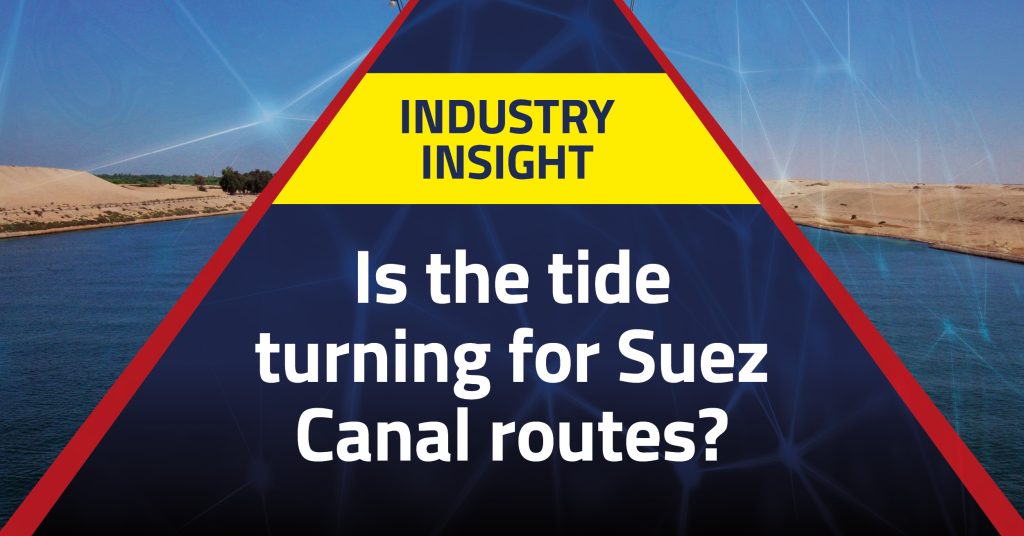Key Insight: CMA CGM has cautiously reintroduced Suez Canal transits on a limited basis, trialling a single vessel on its EPIC (Europe–Pakistan–India Consortium) service. This calculated move could set a precedent for other global carriers reconsidering the longer detour around the Cape of Good Hope.
1. Testing the Route
CMA CGM has sent one of its EPIC service vessels, the CMA CGM Aquila, through the Suez Canal—marking the first such passage since Red Sea disruptions pushed carriers toward longer, safer detours. This isn’t a full-scale return, but a measured test to evaluate the feasibility of reintroducing this vital trade corridor.
2. Strategic Drivers Behind the Move
- Time & Fuel Efficiency: The Suez Canal offers significant reductions in transit time compared to routing around the Cape, delivering fuel savings and faster delivery cycles.
- Cost Incentives: A 15% rebate from the Suez Canal Authority adds further appeal, making the route financially attractive despite ongoing security concerns.
These factors suggest the reintroduction may be more than symbolic—potentially laying the groundwork for broader operational change.
3. Implications for the Wider Industry
- Pressure on Peers: CMA CGM’s cautious return could encourage other carriers—such as Maersk, MSC, and Hapag-Lloyd—to reassess their strategies.
- Congestion vs. Capacity Risks: A large-scale return to Suez could ease pressure on Cape-bound traffic but may risk capacity imbalances if too many operators return simultaneously.
4. Still a Cautious Approach
- Not Yet Routine: This transit is not part of CMA CGM’s regular EPIC schedule. The move remains a trial rather than a full-scale rerouting.
- Security Still a Factor: Despite a declared Houthi ceasefire, risks in the Red Sea remain. As a result, carriers are treading carefully before reinstating regular canal use.
5. What’s Next?
- Expansion on the Horizon: From mid-June, CMA CGM plans to route vessels from its Med Express (MEDEX) and Mediterranean Club Express (MEX) services via the Suez, beginning with the CMA CGM Jules Verne on 21st June.
- Close Observation: Industry stakeholders will be watching carefully to see if this signals a broader return to the Suez Canal or remains an isolated test.
Conclusion
CMA CGM’s strategic trial through the Suez Canal reflects a carefully considered balance between commercial efficiency and operational risk. While far from a wholesale return, the move could influence global routing decisions and unlock renewed momentum for the canal—if security conditions continue to stabilise.
As the shipping landscape evolves, agility and data-led decision-making remain crucial for all players navigating today’s complex global trade environment.

